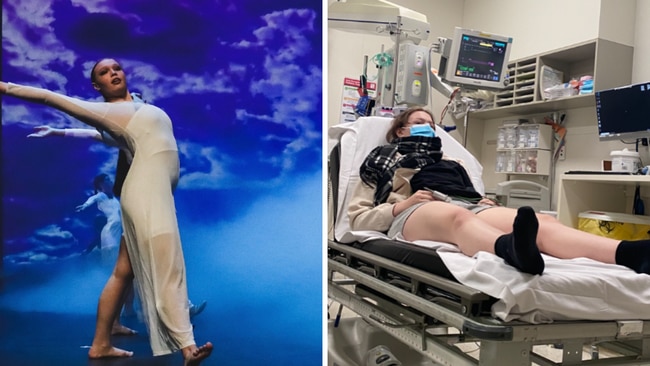‘My 16-year-old daughter is allergic to the sun, the cold and thunderstorms’
Diagnosed with an ultra-rare condition, Tayla faces a new challenge every day, as her severe allergic reactions can be triggered by the smallest changes in temperature.

Family Life
Don't miss out on the headlines from Family Life. Followed categories will be added to My News.
Tayla is just like any other 16-year-old. Lover of singing and dancing, she lights up when she's performing on stage.
But the second Tayla walks outside, it’s a different story.
The 16-year-old’s life is dictated by her unusual and rare condition, which causes her to experience extreme pain and break into a nasty rash.
Sometimes, she can’t keep certain foods down.
Eating certain foods, exercising, and different weather patterns are the worst nightmare; she is literally allergic to the sun.
RELATED: My daughter is allergic to her own tears - it makes her skin shed like a snake

“I react to the sun, the cold, weather changes and certain storm activity”
The moment she was born, doctors were confused by Tayla’s condition; rashes covered her skin, and she fell sick without reason.
After four years of testing, specialist appointments and trips to the emergency department, the Australian girl was diagnosed with systemic mastocytosis, a rare genetic condition where white blood cells attack her body.
When exposed to certain triggers, be it sunshine, particular foods or exercise, her body reacts in a painful and excruciating way.
“I tell people my body likes to overreact to everyday things,” she told the Royal Children’s Hospital. “I react to the sun, the cold, weather changes and now certain storm activity.”
Frustratingly, certain triggers can have no effect on the 16yo later on, and vice versa, making it confusing for her family to keep up with treatments.
“One day, I could have a whole handful of strawberries and be completely fine, and the next, I have an allergic reaction to them,” she told 7News.
She frequently passes out after exercising or undergoing certain physical activities and will throw up when her body triggers a dysautonomia response, which causes adrenaline to “dump” into her system.
During these episodes, Tayla has to sleep for days, sometimes weeks, to settle her organs and begin fresh.
“Sleeping helps to reset my body,” she said. “I sleep for days, but more recently, this has been weeks at a time to reset and function.”
RELATED: My little girl is allergic to the sun but a dress changed everything
RELATED: How a rare genetic diagnosis changed this dad's life
Above all, the sun is one of the most harmful parts of her condition.
“I give up a lot of teenage stuff just to be able to function on a basic level, which most take for granted,” she said to the RCH.
And it’s not just Tayla making sacrifices for her health.
As a baby, Tayla’s family made the tough decision to leave their family in Queensland and move to Melbourne, which offers a better climate for Tayla’s skin.
“Tay was so reactive to the heat that we made the decision to move to a colder climate,” her mum, Leisa, said. “Queensland’s just not a great environment for Tayla so we made that decision as a family.”
One of the scariest moments Tayla experienced was during a 42C day during the Black Friday bushfires.
The teenager was standing in the water at the beach, trying to cool herself while the heat scorched the rest of her skin.
But the transition from the heat to freezing water overwhelmed Tayla’s body - her lips began turning blue, and her body went pale.
“The reaction was triggered so quickly with the hot and the cold, her body just couldn’t regulate,” her mum said.
RELATED: ‘My 1yo had an allergic reaction - doctors were more concerned about his birthmark’
“Even when we speak to doctors, they don’t know what’s going to happen”
Her condition baffles some doctors, too.
“Teenagers having systemic mastocytosis is almost unheard of ... so, even when we speak to doctors, they don’t know what’s going to happen ... we don’t know the progression,” Leisa told 7News.
“We kept being told every year she was going to grow out of it, but when she hit puberty the mast cells just got worse.”
However, there is a sliver of hope for the teenager, who has since started seeing a new physiologist who has sent her on a new rehabilitation program.
She is also taking new medication and taking her steps one day at a time.
“It’s about being a little bit more practical with her being a teenager — instead of going gung-ho and just steadying her,” she said.
“The meds really have been life-changing... so, we are hoping this year is going to be very different to last year.”
More Coverage
Originally published as ‘My 16-year-old daughter is allergic to the sun, the cold and thunderstorms’




